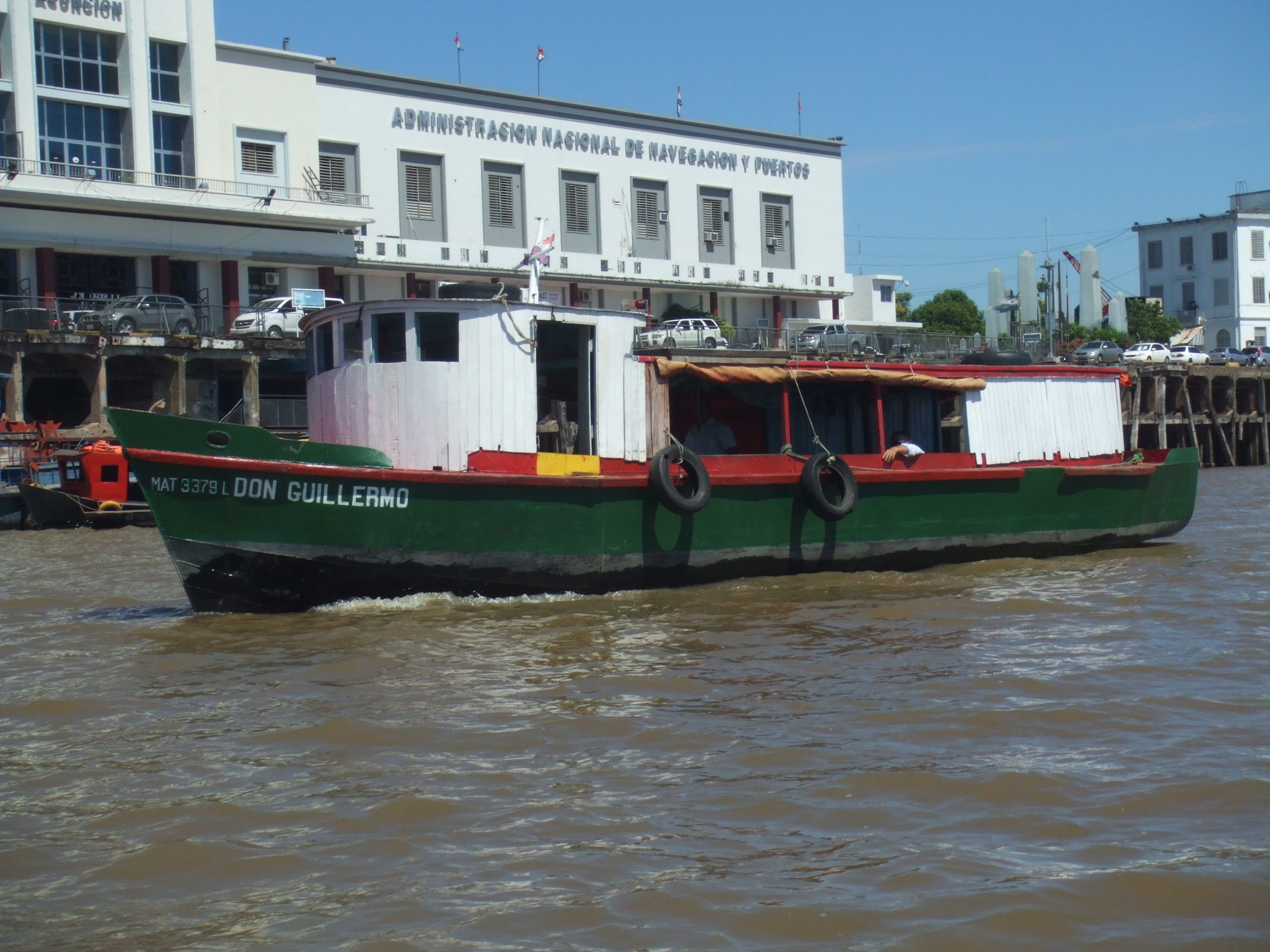The old port of Asuncion sits in the Bay of Asuncion just off the River Paraguay. It is located riverside in the heart of the historic center of Asuncion.
At one time the port of Asuncion handled the majority of the freight coming to and leaving from Paraguay. The River Paraguay provided Paraguay with its contact to the wider world.
The old port is though closed and its buildings sit empty and abandoned.
The port of Asuncion is one of the oldest in South America dating from the late 19th century.
Although it lies a thousand miles from the sea it is considered a deep water port. The River Paraguay being navigable to large ocean going ships to points even further up steam than the Bay of Asuncion.
The port in its present form opened in 1890. At that date a harbour wall was built and covered warehouses constructed to hold good travelling to and from Paraguay.
Just a few years later in 1904 the first round of renovations took place. At that date the warehouses were improved and an office built for the Director General of Customs.
This gave Paraguay a central location for the collection of taxes due on goods travelling in and out of the country. Being within walking distance of both parliament and the government palace ensured that a close control could be placed upon the goods passing though the port.
A further set of renovations were carried out in 1927. The the harbour wall was raised to 10.25 metres. Doing that removed any possible risk there may have been of the port being flooded on the occasion of the river level being exceptionally high. The changes in rainfall in between the dry and wet seasons cause river levels to fluctuate every year throughout Paraguay.
At the same time the warehousing facilities were modernized.
The next set of works in 1961 although it could not be know at the time were to prove to be the last major works at the port. With the port already having all the buildings it required the 1961 works consisted solely of modernizing and refurbishing the buildings to bring everything up to date.
Following these modernizations further works were carried out in the 1980s and in 2008. These though were little more than small scale repairs and refurbishments.
It was clear long before 2008 that the government owned port had ceased to be important to the economy of Asuncion and that it was no longer a viable entity.
The reason for this was the large number of smaller privately owned ports that had appeared by the year 2000. These new ports were either north or south of the Bay of Asuncion but still within Greater Asuncion or located at other towns along the river bank.
These new ports were smaller and more flexible than the port of Asuncion. Additionally they could be placed on empty stretches of river bank with space for modern warehouse facilities and better access to the road network or at factory sites where the goods could travel directly from the factory to the waiting ships.
As with elsewhere in the world the move towards shipping goods in standardized shipping containers drove the transfer of business to ports built to handle them.
The port buildings still all stand on the banks of the Bay of Asuncion. A memorial to the industrial heritage of Paraguay. The old abandoned cranes still hang out over the water, as if waiting for a ship that never comes.
The buildings and infrastructure of the port are still all structurally sound. Everything was well built and made to last.
In view of this and the important part the port played in the history of Paraguay there are plans to turn the complex into a museum.
In common with other historic structures in Paraguay such as the railways the current problem is funding.
Once funds can be found and the buildings converted the port will become another much valued point of interest in the heart of Asuncion.
The rest of the shoreline of the bay has been smartened up with a modern boulevard in from of the Costanera. A museum at the port would be a fitting addition to the Costanera.


Recent Comments